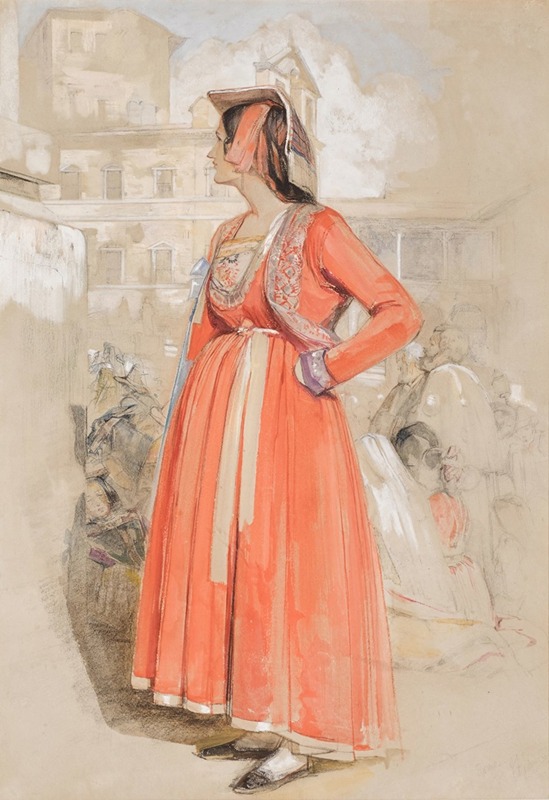
Study Of A Young Neapolitan Woman In Rome
A hand-painted replica of John Frederick Lewis’s masterpiece Study Of A Young Neapolitan Woman In Rome, meticulously crafted by professional artists to capture the true essence of the original. Each piece is created with museum-quality canvas and rare mineral pigments, carefully painted by experienced artists with delicate brushstrokes and rich, layered colors to perfectly recreate the texture of the original artwork. Unlike machine-printed reproductions, this hand-painted version brings the painting to life, infused with the artist’s emotions and skill in every stroke. Whether for personal collection or home decoration, it instantly elevates the artistic atmosphere of any space.
John Frederick Lewis (1804–1876) was a distinguished British painter known for his detailed and vibrant Orientalist works. His artistic career spanned several decades, during which he produced a variety of paintings that captured the essence of the places and people he encountered. One of his lesser-known works is "Study of a Young Neapolitan Woman in Rome," which reflects his keen interest in capturing the human form and cultural diversity.
Lewis was born in London and initially trained under his father, Frederick Christian Lewis, an engraver. He began his career as an animal painter but later shifted his focus to Orientalist themes after extensive travels in Europe and the Middle East. His time spent in Italy, Spain, and later Egypt profoundly influenced his artistic style and subject matter.
"Study of a Young Neapolitan Woman in Rome" is an example of Lewis's ability to capture the subtleties of human expression and attire. Although specific details about this particular painting are scarce, it is consistent with Lewis's broader body of work, which often depicted individuals in traditional or culturally significant attire. His paintings are characterized by meticulous attention to detail, vibrant colors, and a strong sense of realism.
During the period when Lewis painted, there was a growing fascination in Europe with the cultures and peoples of the Mediterranean and the Middle East. This interest was part of a broader Orientalist movement in art and literature, which sought to depict and romanticize the "exotic" aspects of these regions. Lewis, however, was noted for his respectful and authentic representation of his subjects, often spending extended periods in the regions he painted to ensure accuracy and depth in his work.
The painting likely portrays a young woman from Naples, a city known for its rich history and cultural diversity, set against the backdrop of Rome, another city with a profound historical and cultural legacy. The choice of subject reflects Lewis's interest in the interplay between different cultures and the unique characteristics of individuals within those cultures.
Lewis's works, including "Study of a Young Neapolitan Woman in Rome," are celebrated for their technical excellence and the artist's ability to convey the dignity and individuality of his subjects. His paintings are held in high regard and can be found in various public and private collections, although this specific work may not be as widely recognized as some of his other pieces.
In summary, "Study of a Young Neapolitan Woman in Rome" exemplifies John Frederick Lewis's skill in portraiture and his dedication to capturing the essence of the people and cultures he encountered. While detailed information about this specific painting is limited, it remains a testament to Lewis's broader artistic legacy and his contribution to the Orientalist movement in 19th-century art.


















